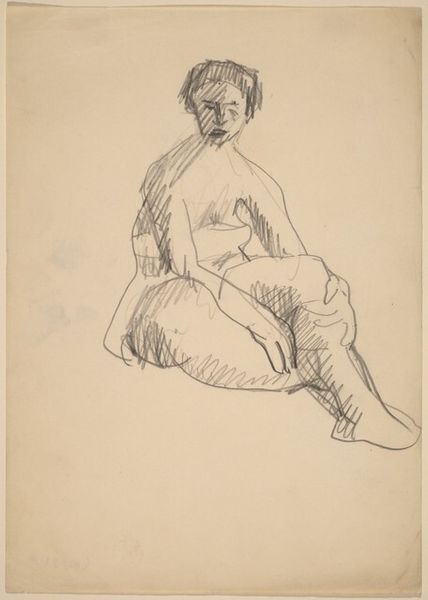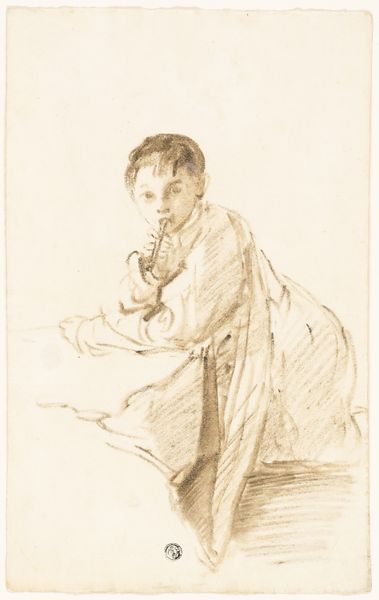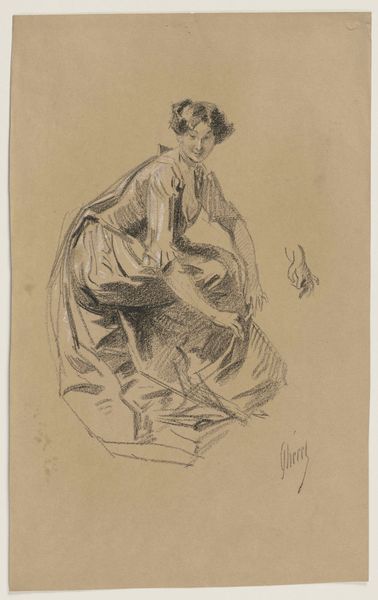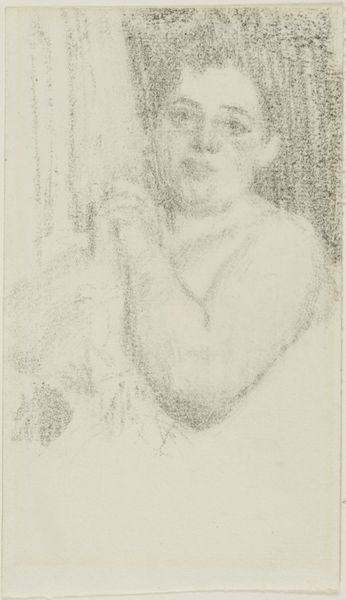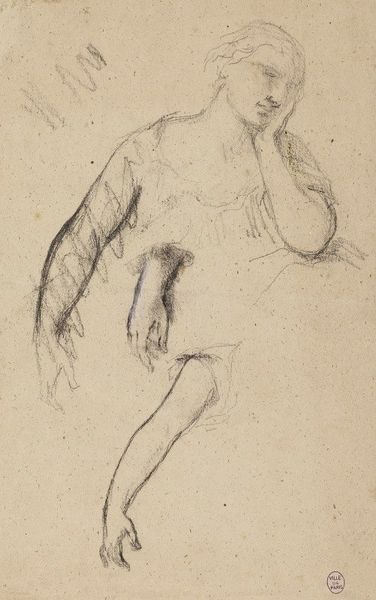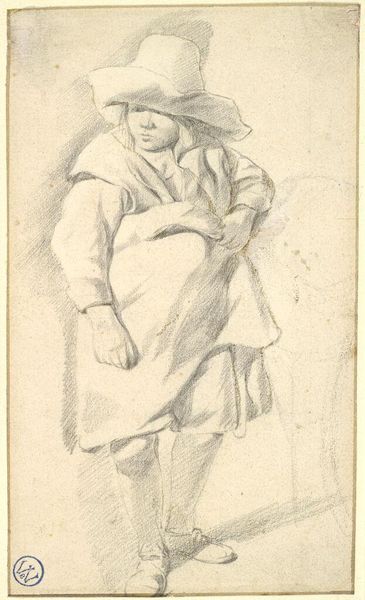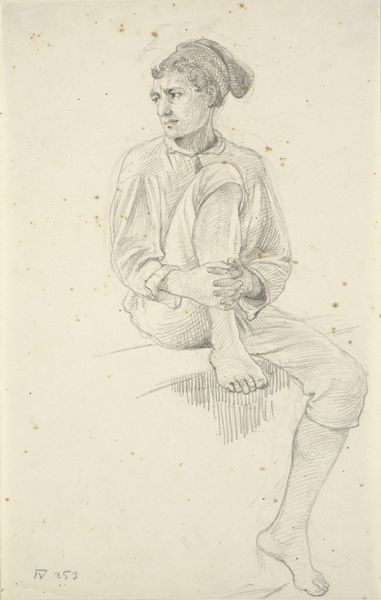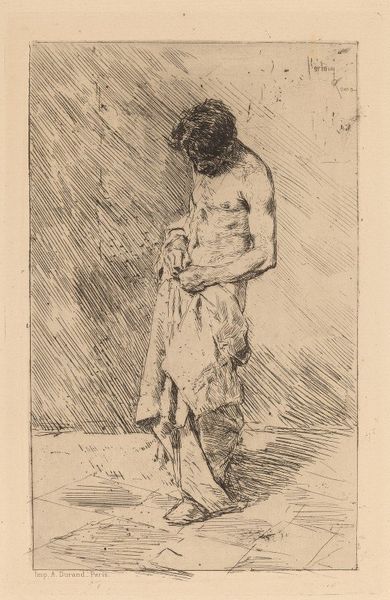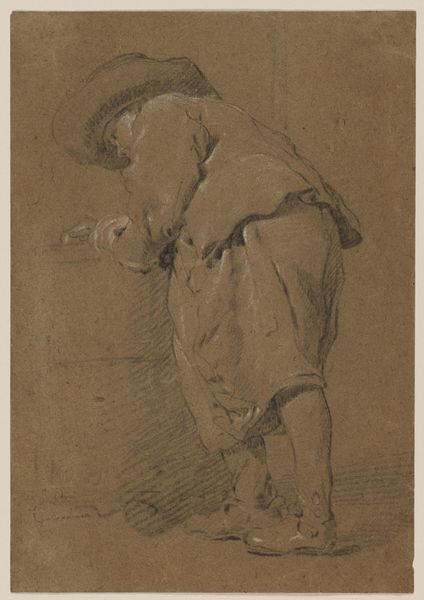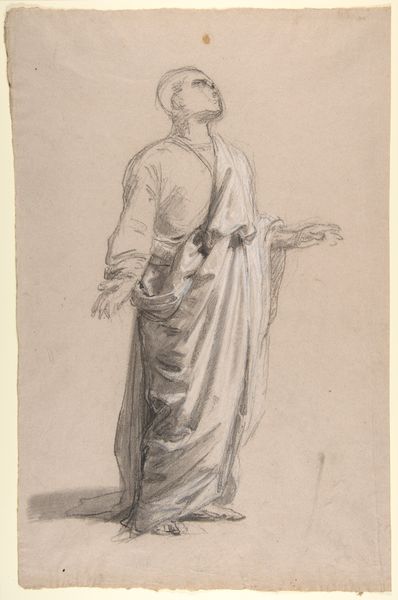
Dimensions: overall: 50.5 x 33 cm (19 7/8 x 13 in.)
Copyright: National Gallery of Art: CC0 1.0
Curator: Here we have Ernest Rouart's "Study (The Artist's Son Julien)," a pencil drawing from around 1916. What strikes you first? Editor: There’s an immediacy and gentleness to it. The limited palette and the soft shading evoke a quiet intimacy, almost as if we're catching a glimpse of a private moment. The composition, with so much negative space, heightens that feeling of delicate transience. Curator: I see it in the context of early 20th-century anxieties about childhood and representation, right as war ripped childhood from many young boys. Rouart's portrait, a simple study, is powerful in that Julien appears neither posed nor performative. This naturalism, during wartime, complicates notions of duty and innocence. Editor: Intriguing. Focusing on the drawing itself, the artist masterfully employs a range of tonal values. Note the contrast between the vigorously sketched background and the softly rendered facial features. That directs our eye and establishes a focal point, don’t you think? Curator: Absolutely, but what does it say? To me, the contrast reflects the inner world of the boy against a chaotic, almost violently scribbled world outside. We see innocence and introspection highlighted in response to external societal pressures of the time. Think of how other artists around this time struggled with that. Editor: I appreciate your intersectional reading of the work. But technically speaking, it is amazing. Look at how the pencil work varies in direction to suggest volume and form. And notice how areas are left unfinished, which enhances the drawing’s spontaneous, observational quality. Semiotically, those gaps are potent! Curator: It is striking. I see the unfinished aspects as revealing how societal roles during that time were equally "unfinished," always in a state of negotiation. Gender, expectation, obligation - especially for sons in that era – all lay uncomfortably, sketched but never completely resolved. Editor: That's a compelling perspective! The beauty of art, isn't it, that a singular artwork can unlock multiple pathways of interpretation? Curator: Indeed. What begins as a simple pencil drawing of a boy ends up revealing deep historical, social, and intensely personal narratives.
Comments
No comments
Be the first to comment and join the conversation on the ultimate creative platform.
